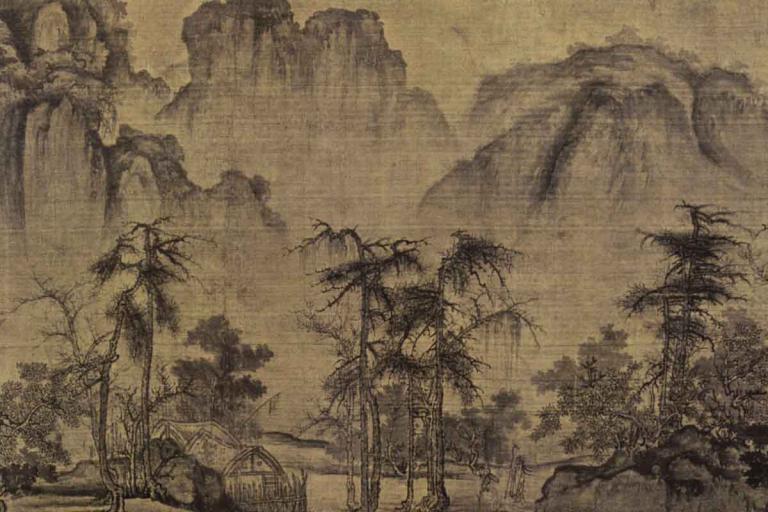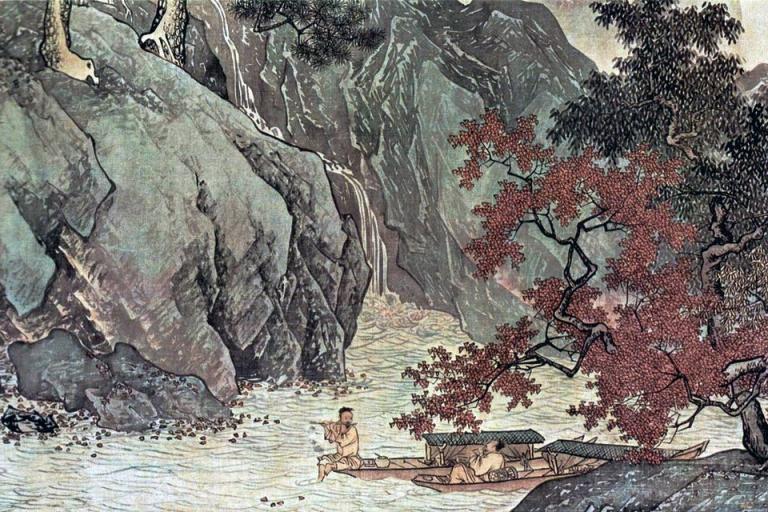Literati Painting in the Five Dynasties
3 min readLiterati painting, just as its name implies, refers to painting created by literati. The phrase was first brought forward by Dong Qichang in Ming dynasty, yet in painting history, there were literati paintings as early as in Han dynasty. In the period of Wei, Jin, Southern and Northern Dynasties, literati painting represented by Gu Kaizhi had become a main stream in the painting field. In Sui, Tang and the Five Dynasties, there were also numerous literati involved in creating brushwork. In Northern Song dynasty, Wen Tong, Su Shi, Mi Fu led the mode. They were not only creating literati painting, but also promoting literati painting theoretically. Influenced by them, more and more intellects and bureaucratic scholars began to express their personal emotion and sentiment through painting.
Modern Chinese painter Chen Shi once pointed out the four basic elements for Chinese literati painters, namely moral standing, knowledge, talent and ideology. Any painter with the four elements can be considered as literati painter. And their paintings, as combinations of the art of poetry, calligraphy, painting and seal cutting, can be called literati paintings.

We11-known literati painters of the time include the following: Wen Tong(1018-1079), with Yuke as his courtesy name and Laughing Hermit as his title, was a native of Zitong in Yongtai (Yantong in Sichuan today). He passed the imperial examination and was entitled Metropolitan Graduate in 1049. He was appointed as the prefect of Yangzhou prefecture. Later he died on his way to Huzhou.
Hence he was also called Wen Huzhou. Wen Tong was highly cultivated in literatureand was good at poetry, essay writing, calligraphy and painting. In painting he was especially good at painting ink bamboos. During his service as the prefect of Yangzhou prefecture, he even ordered the construction of a pavilion for viewing bamboos in a local place called Yundang Valley. With the close observation andknowledge of bamboos, he could paint bamboos very well. Su Shi said that he had already got the accurate image of bamboos in his vision before painting. His ink bamboo paintings greatly influenced later painters and he got a number of followers known as “Huzhou Bamboo School”. His work Ink Bamboos was preserved till today.
Su Shi(1037-1101), with Zi Zhan as his courtesy name and Resident in Dongpo as pseudonym, was from Meishan (in Sichuan today). He was born to an intellectual family. His father Su Xun and younger brother Su Zhe were both famous literati. The three Su were all listed among the Eight Prose Masters of Tang and Song Dynasties. Su Shi excelled in poetry and prose writing, especially good at writing Ci poems. He was known as a representative of the Bold and Unrestrained School of Ci poems inSong dynasty. He was also skillful in calligraphy and was among the four greatest calligraphers of Song dynasty. In painting he was specialized in painting withered wood, bamboos and rocks. His purpose of painting was to express subjective feelingand sentiment rather than to pursue the depiction of the exact form of images. He canonized the paintings of Wang Wei,a poet in Tang dynasty. He praised him “writing poems as painting, and painting as writing poems”. This notion had become a theoryabout the relation between painting and poesy, which greatly influenced the later development of literati painting. Su Shi’s work Withered Wood, Bamboos and Rocks was left to us today.
Other famous literati painters in the period of Song dynasty include Li Gonglin, Yang Wuji, Mi Fu and Zhao Mengjian, as well as Wang Tingjun and Zhao Binwen in Jin dynasty.









